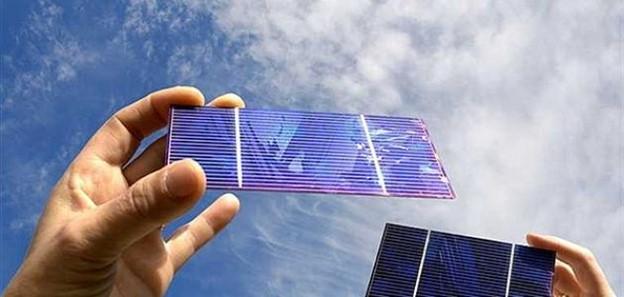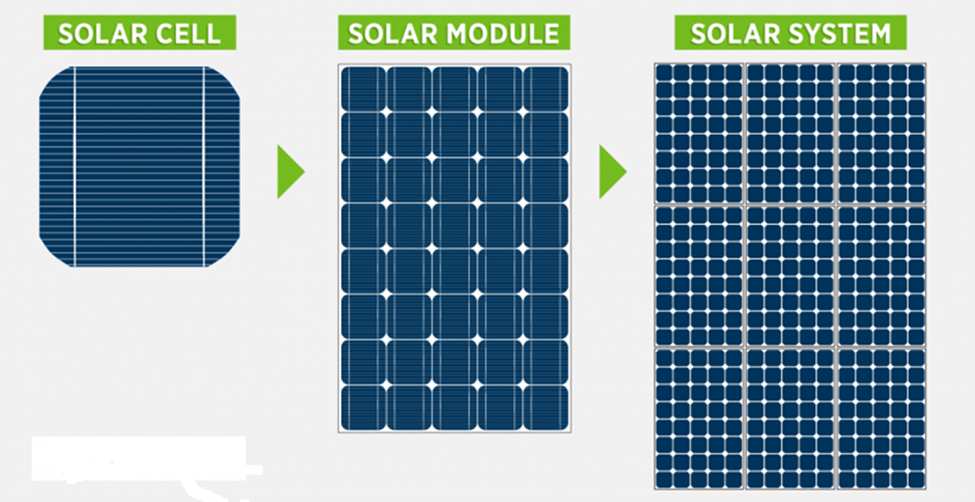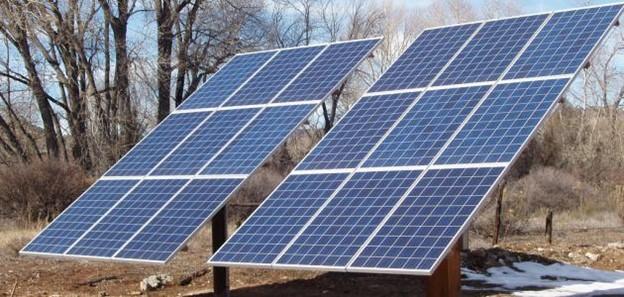
Why waste our time drilling for oil and drilling wells to supply power plants when there is a cosmic power plant located above us?
It does not need fuel that it has enough of, it does not require you to pay monthly for its consumption in addition to the fact that its fuel is not expired, what am I talking about? It is the sun, my friend of the reader, through its rays that strike the surface of the earth and for only an hour and a half, we can illuminate the planet for a whole year, according to a statement by the Ministry of energy But of course here we are going to need to build huge solar cell farms in order to store them.
Getting direct benefit from the sun is easy, but what about the night? There are batteries that store these rays in order to secure an electric current, is it reasonable? To tell you everything you need to know about the array of solar cells, let's continue reading together to provide comprehensive information about it.
What is a solar cell?

With a simplified definition, it is the smallest functional unit or building block of an electric generator that derives its energy from the sun and works to convert it into electricity. He first discovered in 1839 the ability of the sun to generate current by Edmund Becquerel, then Charles Frits made in 1883 the first photovoltaic cell, With the progress in studies and research in the twentieth century, Albert Einstein explained the photoelectric effect in 1903, but it was made in its modern form in 1954.
Browse more through the link: IBS-SHOP
Here are 7 stages of manufacturing solar cells
- The silicon is purified: to get silicon as pure as possible so that the percentage of impurities does not exceed 1% maximum, and when the percentage of impurities is less, the better.
- Manufacture of silicon crystals: As you know, dear reader, the photovoltaic cell is made of monocrystalline silicon.
- Making silicon wafers: This stage is done by cutting the silicon molds we got into wafers, either rectangular or hexagonal.
- Activated silicone: And here we mean to put additional materials that activate the silicon chips.
- Add electrical connections: This is in order to connect the photovoltaic cells between them and then to an outlet for the current produced by them, but let me tell you that these connections are often made of tin-coated copper and they must be thin so as not to block even a small part of the received sun poles.
- Putting materials that prevent reflection: silicone, in turn, may reflect 35% of the rays, and we know that what is required is not to reflect these rays, but rather to absorb them.
- Cell Encapsulation: In order to get a photovoltaic cell ready to start its work, we encapsulate it in the last stage with silicone rubber and then a glass cover.
After we got to know the stages of manufacturing these cells, let's get to know their types.
What are the types of photovoltaic cells?
In the coming lines, you will find three types of cells, and each cell differs from the other in the compound it is made of, so let's continue reading together
- Monocrystalline Cell: This cell is made of monocrystalline silicon, it has a very nice appearance, and it can often be colored, and the cells tend to have a cylindrical shape, and it is one of the most efficient types
- Crystal solar cells: This type of cell was first shown in 1981. Silicon is melted and poured into square-shaped moulds, which are medium-efficient panels compared to their counterparts.
- Thin-membrane cells: Several thin layers of photovoltaic cells are placed on top of each other in order to create the unit, and there are different types of these cells and the difference between them is the materials used in the layers, and these materials are as follows:
- Amorphous silicone.
- Cadmium telluride.
- Indium copper.
- Organic photovoltaic cells.
It is considered one of the cheapest options available when you want to buy solar panels, but it has low efficiency, but do not miss it, because science is developing and this type of cell may become your best option in the future.

Is there a difference between solar panels and cells?
Dear reader, the solar cell is, as we talked previously, the smallest part of the structure of the solar panels, as the sum of the solar cells forms the panels, and the more the number of cells, the higher the energy to be obtained.
What is its working principle?
These cells are placed in a semi-oblique direction according to the fall of the sun’s rays in your area, and after installing them, they absorb the rays and convert them into electrical energy, either directly or indirectly, that is stored in batteries to benefit more from them.
Its tasks are not only limited to generating electricity, there are heaters A solarium that secures warm water for you and your family.
Want to buy perfect building materials?
Your interest in solar panels and your desire to understand more about them, means that you may be looking for the best products so visit our store where you will find below each product a detailed explanation and broader information about it, what are you waiting for, stop hesitating, visit us through: IBS-SHOP
- https://www.renewableenergyhub.co.uk/main/solar-panels/what-is-a-solar-cell-made-up-of/
- https://www.renewableenergyhub.co.uk/main/solar-panels/solar-cells/
- https://www.energy.gov/eere/solar/how-does-solar-work

